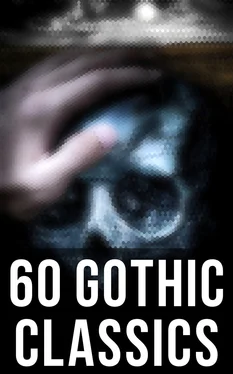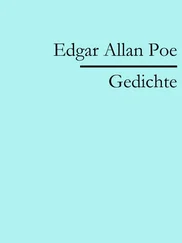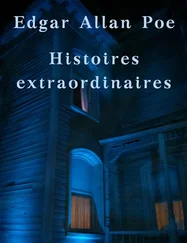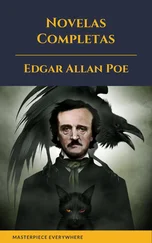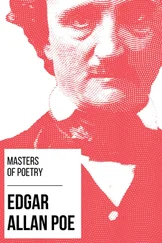84. ... Visnow and Ixhora Two deities of the East Indians, concerning whose history and adventures more nonsense is related than can be found in the whole compass of mythology besides. The traditions of their votaries are, no doubt, allegorical; but without a key to disclose their mystic import, they are little better than senseless jargon.
85. ... talapoins This order, which abounds in Siam, Laos, Pegu, and other countries, consists of different classes, and both sexes, but chiefly of men.— Relig. Ceremon. , vol. iv, p. 62, etc.
86. ... small plates of abominations The Koran hath established several distinctions relative to different kinds of food, in imitation of the Jewish prescriptions; and many Mahometans are so scrupulous as not to touch the flesh of any animal over which, in articulo mortis , the butcher had omitted to pronounce the Bismillah .— Relig. Ceremon. , vol. vii, p. 110.
87. ... fish which they drew from a river According to Le Bruyn, the Oriental method of fishing with a line, is by winding it round the finger, and when the fisherman feels that the bait is taken, he draws in the string with alternate hands: in this way, he adds, a good dish of fish is soon caught. Tom. i, p. 564. It appears, from a circumstance related by Galand, that Vathek was fond of this amusement.—D’Herbelot, Suppl. , p. 210.
88. Sinai This mountain is deemed by Mahometans the noblest of all others, and even regarded with the highest veneration, because the divine law was promulgated from it.—D’Herbelot, p. 812.
89. Peris The word Peri , in the Persian language, signifies that beautiful race of creatures which constitutes the link between angels and men. The Arabians call them Ginn , or genii, and we (from the Persian, perhaps) Fairies : at least, the peris of the Persian romance correspond to that imaginary class of beings in our poetical system. The Italians denominate them Fata , in allusion to their power of charming and enchanting; thus the Manto fatidica of Virgil is rendered in Orlando , La Fata Manto . The term ginn being common to both peris and dives, some have erroneously fancied that the peris were female dives. This appellation, however, served only to discriminate their common nature from the angelic and human, without respect to their qualities, moral or personal. Thus, the dives are hideous and wicked, whilst the peris are beautiful and good. Amongst the Persian poets, the beauty of the peris is proverbial: insomuch that a woman superlatively handsome, is styled by them, the offspring of a Peri .
90. ... butterflies of Cashmere The same insects are celebrated in an unpublished poem of Mesihi. Sir Anthony Shirley relates, that it was customary in Persia, “to hawke after butterflies with sparrows, made to that use, and stares.” It is, perhaps, to this amusement that our author alludes in the context.
91. Megnoun and Leilah These personages are esteemed amongst the Arabians as the most beautiful, chaste, and impassioned of lovers; and their amours have been celebrated with all the charms of verse, in every Oriental language. The Mahometans regard them, and the poetical records of their love, in the same light as the Bridegroom and Spouse, and the Song of Songs, are regarded by the Jews.—D’Herbelot, p. 573.
92. ... they still detained him in the harem Noureddin, who was as old as Gulchenrouz, had a similar indulgence of resorting to the harem, and no less availed himself of it.— Arabian Nights , vol. iii, pp. 9, 10.
93. ... dart the lance in the chase Throwing the lance was a favourite pastime with the young Arabians; and so expert were they in this practice (which prepared them for the mightier conflicts, both of the chase and of war), that they could bear off a ring on the points of their javelins.—Richardson’s Dissertation on the Languages, etc., of Eastern Nations , pp. 198, 281.
94. Shaddukian and Ambreabad These were two cities of the peris, in the imaginary region of Ginnistan : the former signifies pleasure and desire , the latter, the city of Ambergris .—See Richardson’s Dissertation on the Languages, etc., of Eastern Nations , p. 169.
95. ... a spoon of cocknos The cocknos is a bird whose beak is much esteemed for its beautiful polish, and sometimes used as a spoon. Thus, in the History of Atalmulck and Zelica Begum , it was employed for a similar purpose: “Zelica having called for refreshment, six old slaves instantly brought in and distributed Mahramas , and then served about in a great basin of Martabam, a salad made of herbs of various kinds, citron juice, and the pith of cucumbers . They served it first to the Princess in a cocknos beak : she took a beak of the salad, ate it, and gave another to the next slave that sat by her on her right hand; which slave did as her mistress had done.”
96. Ghouls Ghoul, or ghul , in Arabic, signifies any terrifying object, which deprives people of the use of their senses. Hence it became the appellative of that species of monster which was supposed to haunt forests, cemeteries, and other lonely places; and believed not only to tear in pieces the living, but to dig up and devour the dead.—Richardson’s Dissertation on the Languages, etc., of Eastern Nations , pp. 174, 274. That kind of insanity called by the Arabians Kutrub (a word signifying not only a wolf , but likewise a male Ghoul ), which incites such as are afflicted with it to roam howling amidst those melancholy haunts, may cast some light on the nature of the possession recorded by St. Mark, ch. v, I, etc.
97. ... feathers of the heron, all sparkling with carbuncles Panaches of this kind are amongst the attributes of Eastern royalty.— Tales of Inatulla , vol. ii, p. 205.
98. ... whose eyes pervade the inmost soul of a female The original in this instance, as in the others already noticed, is more analogous to the French than the English idiom: “ Dont l’œil pénètre jusqu’à la moelle des jeunes filles. ”
99. ... the carbuncle of Giamschid This mighty potentate was the fourth sovereign of the dynasty of the Pischadians, and brother or nephew to Tahamurath. His proper name was Giam or Gem , and Schid , which in the language of the ancient Persians denominated the sun: an addition ascribed by some to the majesty of his person, and by others to the splendour of his actions. One of the most magnificent monuments of his reign was the city of Istakhar, of which Tahamurath had laid the foundations. This city, at present called Gihil- , or Tchil-minar , from the forty columns reared in it by Homai, or (according to our author and others) by Soliman Ben Daoud, was known to the Greeks by the name of Persepolis; and there is still extant in the East a tradition, that, when Alexander burnt the edifices of the Persian kings, seven stupendous structures of Giamschid were consumed with his palace. This prince, after having subjected to his empire seven vast provinces of Upper Asia, and enjoyed in peace a long reign (which some authors have protracted to 700 years), became intoxicated with his greatness; and, foolishly fancying it would have no end, arrogated to himself divine honours. But the Almighty raised up, even in his own house, a terrible instrument to abase his pride, by whom he was easily overcome, and driven into exile. The author of Giame al tavatikh mentions the cup, or concave mirror of Giamschid, formed of a gem, and called the cup of the sun. To this vessel the Persian poets often refer, and allegorize it in different ways. They attribute to it the property of exhibiting everything in the compass of nature, and even some things that are preternatural. The gem it consisted of appears to be the carbuncle or oriental ruby; which, from its resemblance to a burning coal, and the splendour it was supposed to emit in the dark, was called Schebgerag, or, the torch of the night. According to Strabo, it obtained its high estimation amongst the Persians, who were worshippers of fire, from its igneous qualities; and perhaps those virtues for which it hath been styled “the first of stones.” Milton had a learned retrospect to its fabulous powers, in describing the Old Serpent:
Читать дальше
